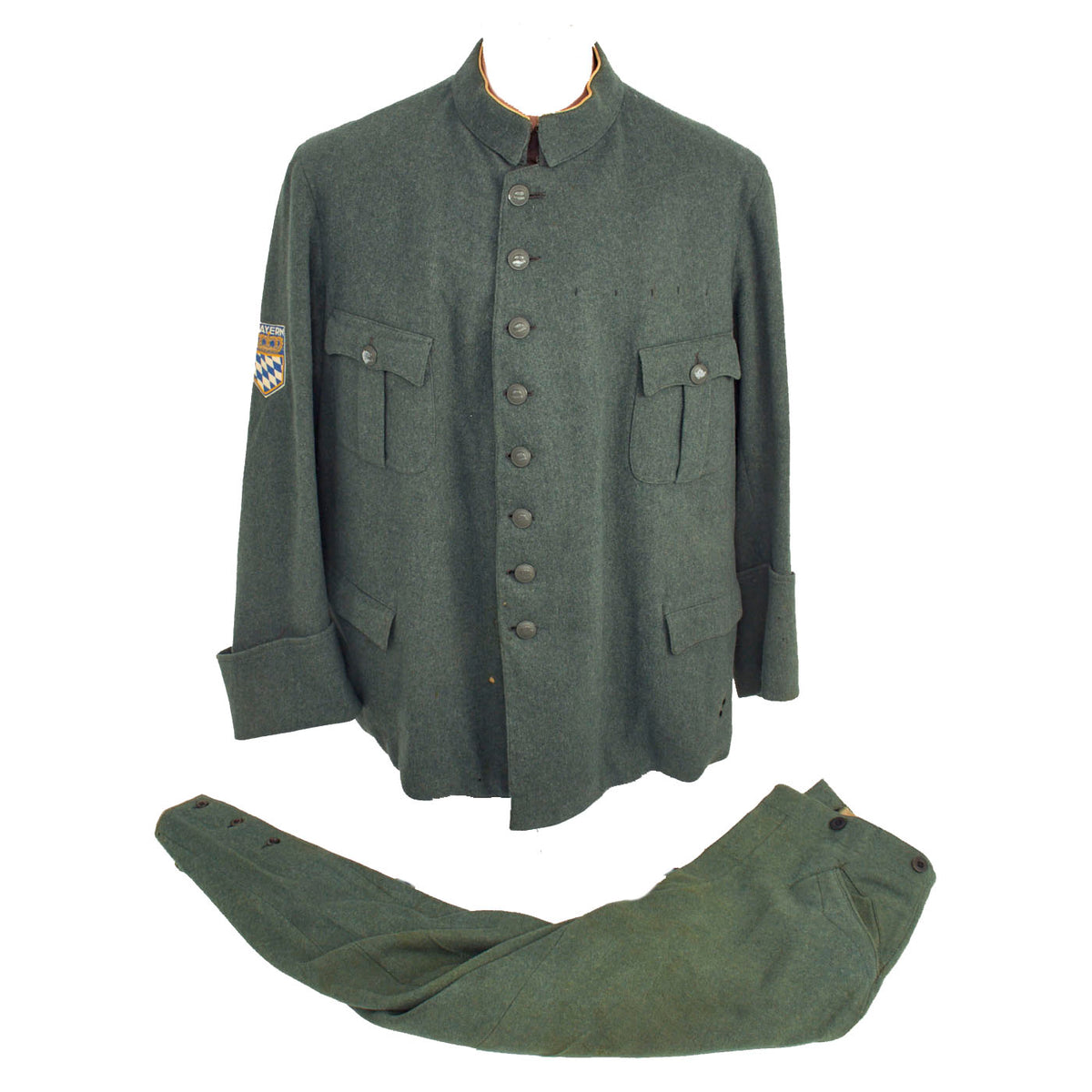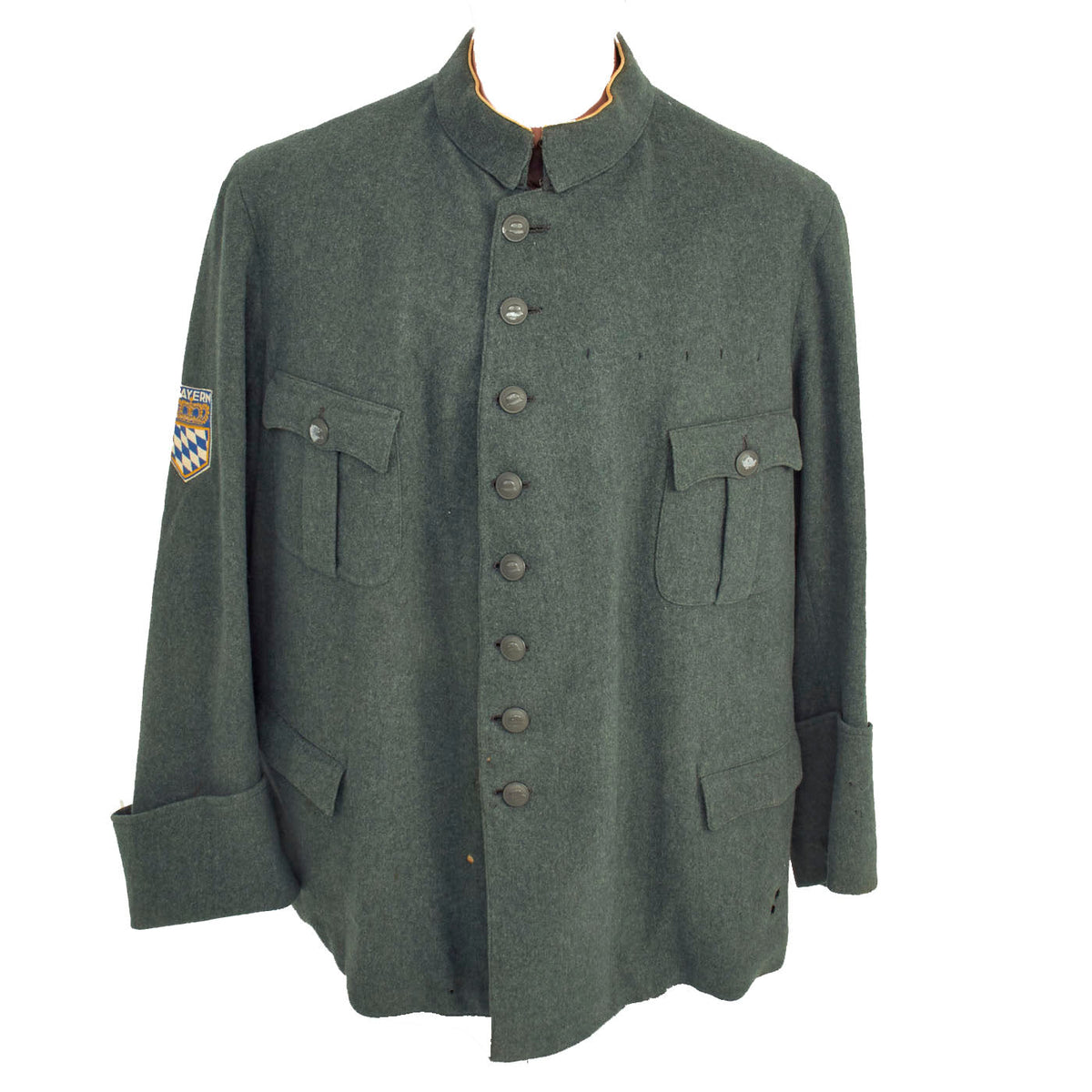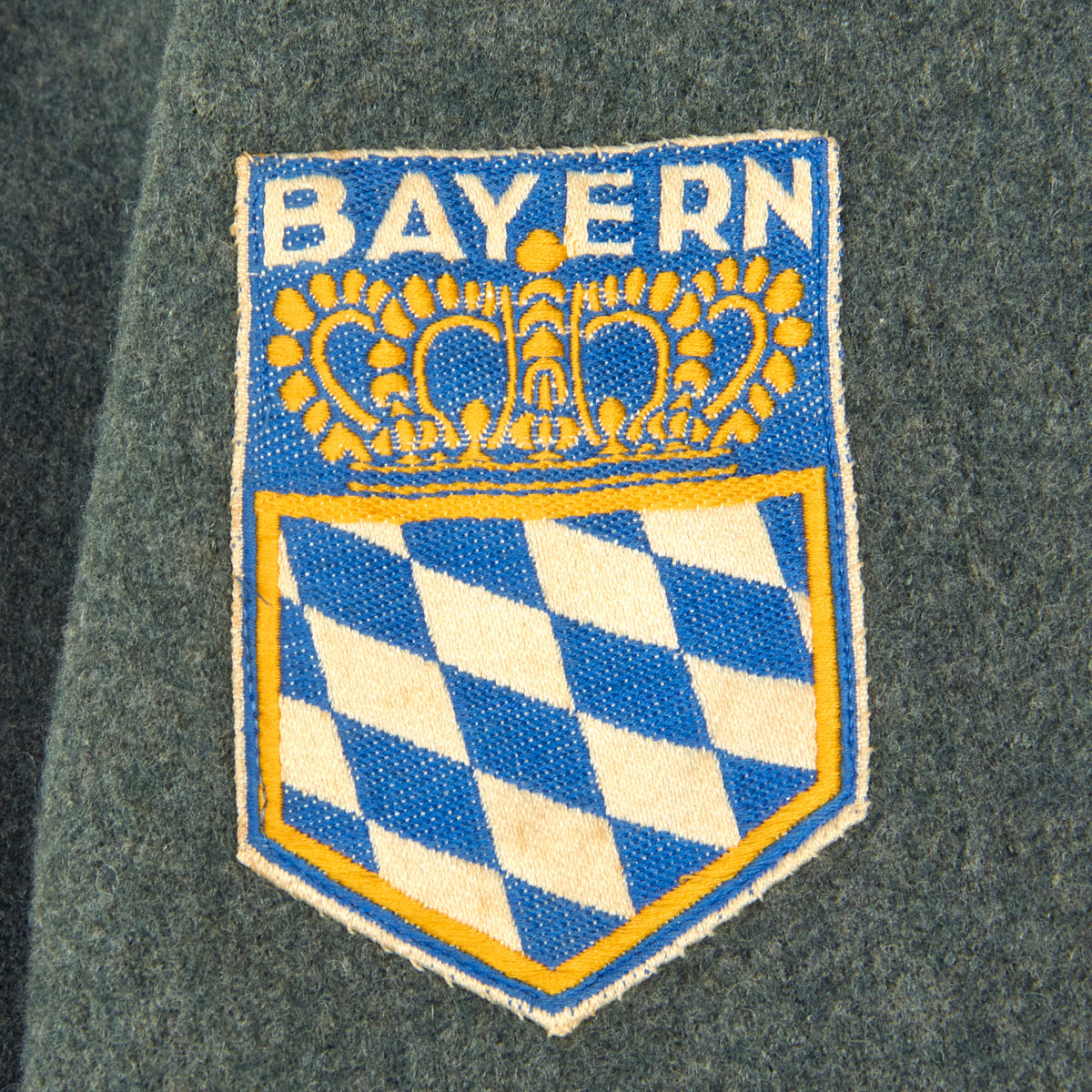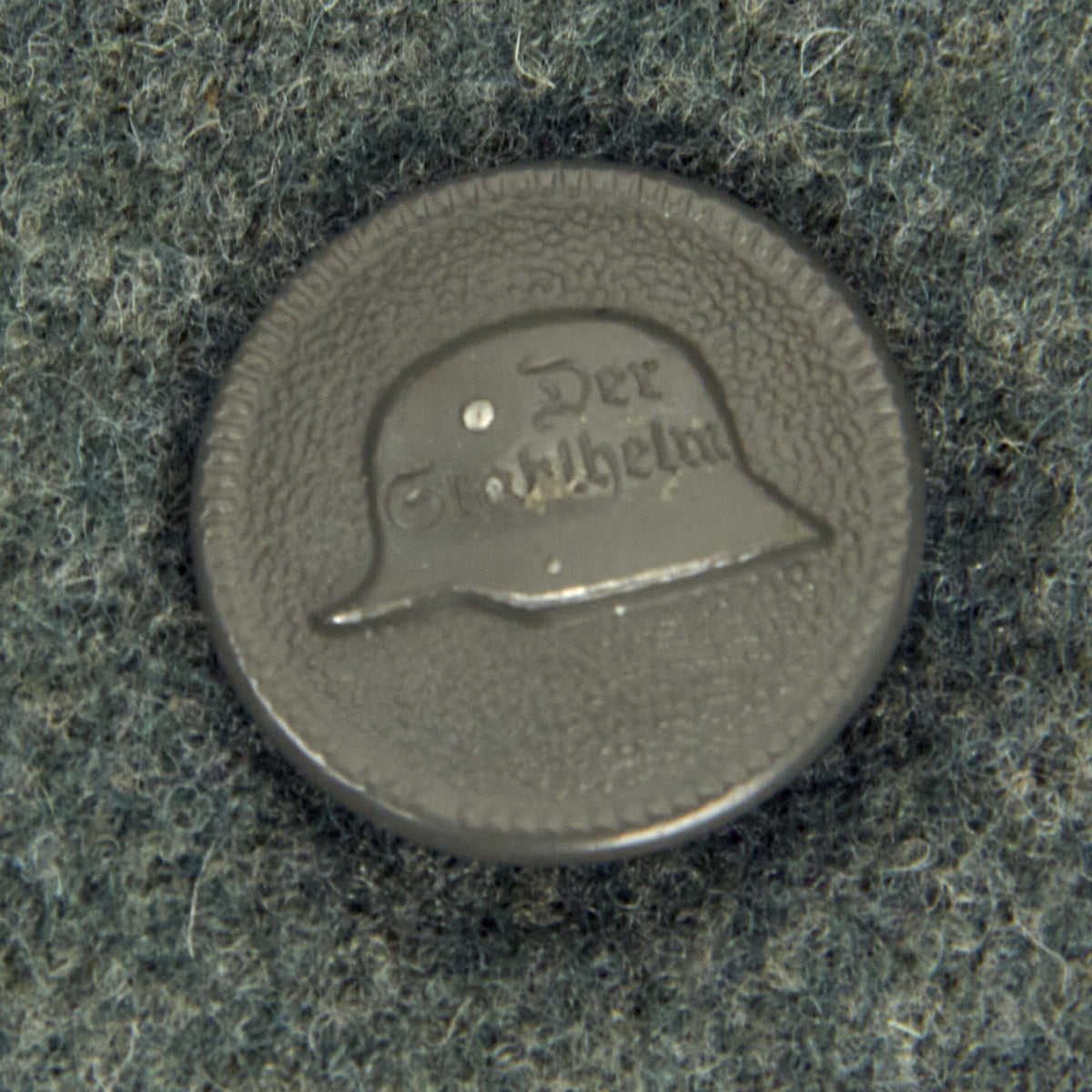Original German Weimar Republic Period Der Stahlhelmbund Bavarian District Uniform Tunic & Breeches Original Items
$ 1.295,00 $ 323,75
Original Item: Only One Available. Der Stahlhelmbund (The Steel-helmet-league) was conceived as a national veterans’ organization by Franz Seldte in November of 1918, and was officially founded on Christmas day of that year. It was mostly comprised of WWI veterans trying to assimilate back into what was then a devastated society. The Stahlhelm became the largest of the post-war veterans’ groups, incorporating many of the smaller Freikorps groups into it. Most of its members were assimilated by the SA in 1933, and it was disbanded in 1935, with its remaining members absorbed by the DRKB (“Deutscher Reichskriegerbund”), which, in turn, was absorbed by the NS-RKB (“Nationalsozialistische – Reichskriegerbund”) in 1938. The Stahlhelm organization was divided into twenty-five district areas, with each one having a distinctive sleeve shield to identify the area the members were from.
This is a very nice example of a uniform used by members of Der Stahlhelmbund, which was essentially the same as the German military uniform. Many members in fact used their uniforms, with the original insignia removed and a district patch added to one of the arms. The tunic features an 8 button front closure and a vented rear seat, with French cuffs on the sleeves. It has 4 pockets with scalloped flaps, and looks very much to be a German Weimar Period Reichswehr tunic. The WWI tunics usually did not have chest pockets, which were introduced for the Reichswehr in the 1920s.
There are no insignia on the tunic except for the BAYERN (Bavaria) shield-shaped district insignia on the right sleeve, which shows a crown over the “Argent and Azure” (White and Blue) checkerboard emblem of the area. The buttons themselves all are embossed with a German steel helmet that has Der Stahlhelm stamped across it. There is white piping around the collar, but we do not know if this has any significance. The included breeches are fairly standard, and are slightly more green in color than the tunic.
Overall condition of the uniform is very good, showing only light use. There are a few light stains, but nothing out of the ordinary. There also is some scattered moth damage, something that is very hard to avoid with wool uniforms.
A very nice Weimar period uniform set, ready to display!
Approximate Measurements:
Collar to shoulder: 11”
Shoulder to sleeve: 24”
Shoulder to shoulder: 19.5”
Chest width: 24″
Waist width: 25”
Hip width: 27”
Front length: 34″
Pants waist: 16″
Pants inseam: 26″
The Weimar Republic (German: Weimarer Republik), officially the German Reich (Deutsches Reich), also referred to as the German People’s State (Deutscher Volksstaat) or simply the German Republic (Deutsche Republik), was the German state from 1918 to 1933. As a term, it is an unofficial historical designation that derives its name from the city of Weimar, where its constitutional assembly first took place. The official name of the republic remained the German Reich as it had been during the German Empire because of the German tradition of substates.
Although commonly translated as “German Empire,” Reich here better translates as “realm” in that the term does not necessarily have monarchical connotations in itself. The Reich was changed from a constitutional monarchy into a republic. In English, the country was usually known simply as Germany, and the Weimar Republic name became mainstream only in the 1930s.
Fast Shipping with Professional Packaging
Thanks to our longstanding association with UPS FedEx DHL, and other major international carriers, we are able to provide a range of shipping options. Our warehouse staff is expertly trained and will wrap your products according to our exact and precise specifications. Prior to shipping, your goods will be thoroughly examined and securely secured. We ship to thousands clients each day across multiple countries. This shows how we're dedicated to be the largest retailer on the internet. Warehouses and distribution centres can be located throughout Europe as well as the USA.
Note: Orders with more than one item will be assigned a processing date depending on the item.
Before shipping before shipping, we'll conduct a thorough inspection of the items you have ordered. Today, the majority of orders will be delivered within 48 hours. The delivery time will be between 3-7 days.
Returns
The stock is dynamic and we cannot completely manage it because multiple stakeholders are involved, including our factory and warehouse. So the actual stock may alter at any time. It's possible that you may not receive your order once the order has been made.
Our policy is valid for a period of 30 days. If you don't receive the product within 30 days, we are not able to issue a refund or an exchange.
You can only return an item if it is unused and in the same state as the day you received it. You must have the item in its original packaging.
Related products
Uncategorized
Uncategorized
Uncategorized
Band of Brothers ORIGINAL GERMAN WWII Le. F.H. 18 10.5cm ARTILLERY PIECE Original Items
Uncategorized
Uncategorized
Armoured Fighting Vehicles of the World: AFVs of World War One (Hardcover Book) New Made Items
Uncategorized
Uncategorized
Uncategorized
Uncategorized
Uncategorized
Uncategorized
Uncategorized
Angolan Rebel 1970s era 60mm Inert Display Mortar from Angolan Civil War Original Items
Uncategorized
Uncategorized
Uncategorized
Uncategorized
Australian WWII Owen MK1 Machine Carbine SMG Custom Fabricated Replica with Sling Original Items
Uncategorized












































































